Papers by Julia Binnberg
Sympozjum Egejskie - Papers in Aegean Archaeology Vol. 4, 2024
In the present study, a discussion of the term naturalism and its use in previous scholarship pro... more In the present study, a discussion of the term naturalism and its use in previous scholarship provides the methodological basis for an iconographical analysis of the degree of biological and stylistic naturalism in bird depictions from Crete and Thera. In order to find out what is specific about Minoan naturalism in art, a cross-cultural comparison with Egyptian avian iconography is undertaken. It is demonstrated that, although naturalistic images are present in both regions, they differ in many aspects. Thus, it is argued that the artistic focus on balanced movement fundamentally shaped the character of Minoan naturalism, while human activities and various symbolic concepts deeply influenced Egyptian depictions.

European Journal of Archaeology, 2023
The earliest Bronze Age Mediterranean primate representations on frescoes are found at the Aegean... more The earliest Bronze Age Mediterranean primate representations on frescoes are found at the Aegean sites of Knossos (Crete) and Akrotiri (Thera). By contrast, monkeys have so far been missing from Mycenaean frescoes in mainland Greece. A fresco fragment of a cultic scene from Tiryns changes this; it depicts a bipedal partial lower body, with a hanging tail. This image, previously interpreted as a human wearing an animal hide, had already been suggested to represent a monkey. A re-examination of this miniature fresco identified various features that seem to confirm the representation of a monkey, most probably of a baboon-like primate. Assuming that the fresco from Tiryns is part of a cult scene, similar to those from Akrotiri, this adds a further image to a small corpus of Aegean depictions connecting monkeys with important female figures or deities. Furthermore, the Tiryns fresco fragment indicates that primates were not entirely absent from local Mycenaean iconography.
Journal of Anthropological Sciences, 2022
Aegean Archaeology 13, 2022
This study investigates bird depictions in the Early Mycenaean period, dating from late MH to LH ... more This study investigates bird depictions in the Early Mycenaean period, dating from late MH to LH IIIA1. In this time, birds occur frequently on grave goods from elite burials, adorning weaponry, jewellery, metal vessels, seal stones, and ivory objects.
Albeit being present on such well-known objects as the Cup of Nestor or the Tiryns Ring, only few studies have considered the function of these images. By examining them in detail using iconographic analysis, it is found that bird depictions relate to five
major themes, namely militarism, exotic luxury goods, control over economic resources, religion, and rulership. It is furthermore argued that bird imagery epitomizes some key aspects of Early Mycenaean art such as heterogeneity, multivalency, and the selective
use of the wider Aegean and Eastern Mediterranean pictorial repertoire.
TMA supplement 2 , 2022
The article discusses the unusual decoration of a Late Minoan larnax in the Museum of
Rethymnon. ... more The article discusses the unusual decoration of a Late Minoan larnax in the Museum of
Rethymnon. By closely analysing the main motif on the long sides of the larnax it was found that the
larnax shows an ambiguous design which facilitates alternative readings of waterbirds and argonauts.
This result ties in with recent research on the presence of ambiguous and multivalent imagery
in Minoan iconography. It is further suggested that the specifics of the design are consistent with
the funerary context because they create the impression of a shifting image which encapsulates the
notions of transformation and liminality, both of which are conceptually connected to death.
Journal of Greek Archaeology, 2021
Feel free to message me for a PDF of the paper!

Primates, 2021
A recent debate on the taxonomic identification of the monkeys depicted in a fresco from Room 6 o... more A recent debate on the taxonomic identification of the monkeys depicted in a fresco from Room 6 of Building Complex Beta in the Bronze Age town of Akrotiri, Thera (Greece) has triggered a multitude of different interpretations deriving from a fruitful exchange of diverse academic approaches. Thus, Pareja et al. (Primates 61:159-168, 2020a) identified those Aegean monkeys as Asian langurs (Semnopithecus spp.), whereas Urbani and Youlatos (Antiquity 94:e9, 2020a) and Binnberg et al. (J Gr Archaeol 6:in press, 2021) argued for the identification as African vervets (Chlorocebus spp.), and recently Pruetz and Greenlaw (Primates 62:703-707, 2021) introduced the African L'Hoest's monkeys (Allochrocebus lhoesti) and Diana monkeys (Cercopithecus diana) into the debate. This comment intends to present thoughts on the latter contention. In this context, our approach encompassed the morphological analysis of specific features of the face and torso, the cultural context of the use of the blue color for representing the Aegean monkeys, the detailed artistic rendering of Aegean painters, the geographical distribution ranges of the potential candidate monkey species, and the historical context of trading monkeys or exchanging monkey imageries in the eastern Mediterranean region and Africa. All this evidence supports our contention that vervets still represent the most parsimonious models for the monkeys depicted in Room 6. This debate, based on multidisciplinary research, stands as a constructive example for the perspectives that need to be followed for the development of archeoprimatology.
Journal of Prehistoric Religion 27, 2021
This study discusses the significance of metamorphosis, transformation and regeneration in Aegean... more This study discusses the significance of metamorphosis, transformation and regeneration in Aegean Bronze Age spirituality by looking at depictions of three insect groups: butterflies/moths, bees/wasps and beetles. It aims to critically review previous approaches and clarify the extent to which the specific life cycle and behaviour of these insects can inform our understanding of these themes. It is found that the idea of complete metamorphosis, either in a cultic or funerary context, is primarily associated with butterflies/moths, while bees, or more likely wasps, seem to be iconographically linked to the transformative social process of growing up under the supervision of their elders. Finally, it emerges that beetles are in many ways connected to the notion of regeneration.
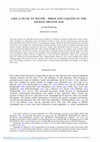
Annual of the British School at Athens 114, 2019
This study examines the relationships between birds and liquids in the Minoan, Cycladic and Mycen... more This study examines the relationships between birds and liquids in the Minoan, Cycladic and Mycenaean cultures. Objects under investigation are bird-shaped vessels, bird figurines attached to vessels, and some special pouring vessels decorated with painted bird motifs, which are listed in an accompanying catalogue. Analysis of this material demonstrates that images
of both doves and waterbirds were consistently linked to liquid-containing vessels, but there are significant chronological and regional variations regarding the preference for bird species. Another aspect fluctuating with period and place is the type of contact created between liquid and bird motif. Three categories dividable into three or two subtypes can be recognised, which mainly differ from each other by the degree of proximity that is established between the fluid and bird motif. It is argued that these differences reflect variations in the perception of birds regarding their relationship to liquids. While a direct and active participation of birds in the flow of liquids such as water and milk is observable in many Cretan and Cycladic
objects, the artefacts from the Greek Mainland show a different pattern, whereby less direct contact combined with a stylised rendering suggests that the bird motif was accorded a more passive role by symbolising the positive effect of the flow of water. These findings contribute to recent scholarly debates on human–animal relationships and ontologies in the Aegean
Bronze Age.
Sympozjum Egejskie. Papers in Aegean Archaeology, 2019
, Krzysztof Jakubiak, for their continuous support of this editorial initiative and for financing... more , Krzysztof Jakubiak, for their continuous support of this editorial initiative and for financing the publication of the second volume released in the SEPAA series.

R. O’Sullivan, C. Marini and J. Binnberg (eds.).Interaction, Integration and Division: archaeological approaches to breaking boundaries., 2017
In this paper, a methodology of animal identification in iconography is developed by combining te... more In this paper, a methodology of animal identification in iconography is developed by combining techniques and insights from zoology/ornithology, anthropology and archaeology/art history. Using examples of bird images from the Aegean Bronze Age it will be shown that only interdisciplinarity can result in accurate identifications. The prevalent methods used by zoology/ornithology such as attention paid to certain morphological features in order to identify scientific species are examined with regard to their applicability to past iconographies. Since anthropological studies demonstrate that a less detailed category – the generic species – is the focus of folk taxonomies, it is concluded that iconographical analysis of pre-Renaissance and/or non-western art should primarily aim to correlate animal images with generic species. This can be achieved by concentrating on the silhouette rather than on plumage/fur patterns. The need to cross-check identifications with the archaeological typology and local artistic traditions to avoid confusion of stylized or decorative elements with species-specific features is also emphasised.

Öffentlicher Vortrag Martin-von-Wagner Museum Würzburg 2012
Die Siedlung von Akrotiri liegt auf der Insel Thera, die heute auch Santorin genannt wird, und zw... more Die Siedlung von Akrotiri liegt auf der Insel Thera, die heute auch Santorin genannt wird, und zwar im Süden an der Küste. Santorin gehört zur Inselgruppe der Kykladen und ist deren südlichste Insel. Die heutige Gestalt in Form von mehreren ringförmigen Inseln (Thera, Therasia, Aspronisi) bekam Santorin hauptsächlich durch einen oder mehrere kurz aufeinander folgende verheerende Vulkanausbrüche in der Mitte des 2. Jahrtausends vor Christus. Der Vulkan, der wohl ehemals 1800 m hoch gewesen war, ließ durch seine Explosion einen riesigen Kraterdie Caldera -entstehen, der dann überflutet wurde. Von diesem Vulkanausbruch her ist die ganze Insel mit einer 30 bis 40 Meter hohen Schicht aus Bimsstein und Asche bedeckt. In den letzten Jahrhunderten wurde der Krater wieder mit mehr Landmasse aufgefüllt, wodurch die Inseln in der Mitte (Kameni-Inseln) entstanden sind. Forschungsgeschichte: Schon im 19. Jahrhundert hatte man auf Thera Überbleibsel von prähistorischen Siedlungen entdeckt, die anscheinend bei dem Vulkanausbruch verschüttet worden waren. Da das damalige Wissen über die bronzezeitlichen Kulturen aber noch sehr lückenhaft war und die minoische Kultur auf Kreta ja auch erst Anfang des 20. Jahrhunderts systematisch erforscht werden sollte, war man noch nicht in der Lage diese Funde einzuordnen. Erst in den 60er Jahren des 20. Jahrhunderts gab der griechische Archäologe Spyridon Marinatos den entscheidenden Anstoß zur genaueren Untersuchung der Insel. Durch dortige Ausgrabungen wollte er seine Theorie vom Untergang der minoischen Palastkultur durch einen verheerenden Vulkanausbruch auf Thera belegen. Er entschied sich dafür, am südlichen Ende mit Ausgrabungen zu beginnen, da dort die Erosion die meterhohe Schicht aus Asche und Bimsstein etwas abgetragen hatte und sie nur noch maximal 15 m betrug. Im Zuge dieser Ausgrabungen fand man in den darauffolgenden Jahren eine wohlhabende bronzezeitliche Siedlung mit Häusern, Straßen und Plätzen, die unter der Ascheschicht die Zeiten wunderbar konserviert überstanden hatte. Bei einigen Häusern ist das Mauerwerk sogar bis ins dritte Stockwerk erhalten und lässt Erinnerungen an das römische Pompeji wachwerden. Akrotiri wird darum auch oft das Pompeji der Bronzezeit genannt. In den Häusern fand man hochwertige Keramik, Alltagsgegenstände und die berühmten Wandfresken, auf die später auch noch genauer eingegangen werden soll. Festzuhalten bleibt, dass Akrotiri für die Erforscher der ägäischen Bronzezeit einen wahren Schatz an Informationen darstellt, den man gar nicht hoch
Books by Julia Binnberg

The thesis discusses bird depictions in the Aegean Bronze Age. The iconographical study is based ... more The thesis discusses bird depictions in the Aegean Bronze Age. The iconographical study is based on a catalogue of almost 2000 objects showing bird images from Crete, the Cyclades, the Greek Mainland and the Dodecanese dating to EB I – LB IIIC. Three research aims are addressed. The first aim is the reliable and accurate identification of the depicted bird species by finding a middle ground between the two approaches that have prevailed in past scholarship, which either consisted of overambitious attempts at species identification or resorted to overgeneralised accounts of bird imagery. A systematic identification methodology, based on a combination of techniques from iconography, ornithology and in particular anthropological studies of folk taxonomies, is developed. The second aim is the interpretation of any specific symbolic functions and ideological roles of birds in different regions and periods. This analysis rests on the combined study of media and find contexts as well as the chosen bird species and iconographical associations. The third aim is the reconstruction of types of ontologies prevalent in different regions. Based on a structuralist model of ontologies developed by the anthropologist Descola, the bird depictions are studied by looking for features that are typical of analogical, naturalist, totemic or animist art.
Each research aim has yielded numerous results, which deepen our understanding of biological knowledge and cultural diversity in the Aegean Bronze Age. First, the vast majority of bird depictions can be identified as belonging to one of the following folk-taxonomical groups: columbids (doves), birds of prey/corvids, waterbirds, wading birds, owls, hoopoes, galliformes, swallows and seabirds. Second, the existence of a multitude of particular functions and roles of birds is revealed. These vary significantly according to time and regions, mirroring historical developments and the presence of different cultural attitudes towards birds. Third, marked regional differences are detectable with regard to ontologies. Cretan and Cycladic bird art is consistent with animist iconography discernible because of a pronounced artistic naturalism, an emphasis on movement and agency, and the presence of shamanic imagery. The images from the Greek Mainland can be characterised as being consistent with an ontology termed analogical by Descola because of a preference of stylised and modular depictions and the persistence of symbolic functions through time. This work lays a foundation opening up a new perspective on interpreting iconography of the Aegean Bronze Age.

This volume brings together two Graduate Archaeology at Oxford (GAO) conferences held in 2015-201... more This volume brings together two Graduate Archaeology at Oxford (GAO) conferences held in 2015-2016 to present the work of early-career researchers from across the globe. The papers cover a range of periods and regions, but all share the focus of bridging boundaries, whether these are theoretical, methodological or geographic. Some contributors traverse traditional divisions between subjects by integrating computational approaches with early excavation data or archaeology with historical sources to produce 'thick interpretations' of the past. Several papers approach the past as a bilateral process, examining how people shaped and were in return shaped by their interactions with the world around them. In addition, many authors have directly tackled the modern political divides that influence our research. Building on a strong tradition of novel approaches and interdisciplinary methods, these proceedings present current research on directly tackling issues of division head on.
Supplements by Julia Binnberg
TMA Supplement 2 - Breaking Boundaries. Connecting the Aegean Bronze Age, 2021
The article discusses the unusual decoration of a Late Minoan larnax in the Museum of Rethymnon. ... more The article discusses the unusual decoration of a Late Minoan larnax in the Museum of Rethymnon. By closely analysing the main motif on the long sides of the larnax it was found that the larnax shows an ambiguous design which facilitates alternative readings of waterbirds and argonauts. This result ties in with recent research on the presence of ambiguous and multivalent imagery in Minoan iconography. It is further suggested that the specifics of the design are consistent with the funerary context because they create the impression of a shifting image which encapsulates the notions of transformation and liminality, both of which are conceptually connected to death.
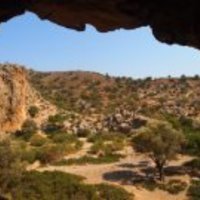
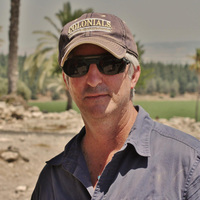
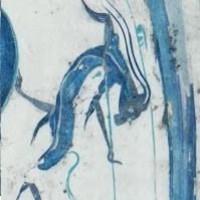


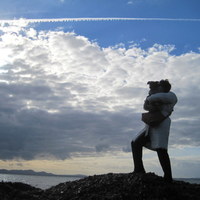




Uploads
Papers by Julia Binnberg
Albeit being present on such well-known objects as the Cup of Nestor or the Tiryns Ring, only few studies have considered the function of these images. By examining them in detail using iconographic analysis, it is found that bird depictions relate to five
major themes, namely militarism, exotic luxury goods, control over economic resources, religion, and rulership. It is furthermore argued that bird imagery epitomizes some key aspects of Early Mycenaean art such as heterogeneity, multivalency, and the selective
use of the wider Aegean and Eastern Mediterranean pictorial repertoire.
Rethymnon. By closely analysing the main motif on the long sides of the larnax it was found that the
larnax shows an ambiguous design which facilitates alternative readings of waterbirds and argonauts.
This result ties in with recent research on the presence of ambiguous and multivalent imagery
in Minoan iconography. It is further suggested that the specifics of the design are consistent with
the funerary context because they create the impression of a shifting image which encapsulates the
notions of transformation and liminality, both of which are conceptually connected to death.
of both doves and waterbirds were consistently linked to liquid-containing vessels, but there are significant chronological and regional variations regarding the preference for bird species. Another aspect fluctuating with period and place is the type of contact created between liquid and bird motif. Three categories dividable into three or two subtypes can be recognised, which mainly differ from each other by the degree of proximity that is established between the fluid and bird motif. It is argued that these differences reflect variations in the perception of birds regarding their relationship to liquids. While a direct and active participation of birds in the flow of liquids such as water and milk is observable in many Cretan and Cycladic
objects, the artefacts from the Greek Mainland show a different pattern, whereby less direct contact combined with a stylised rendering suggests that the bird motif was accorded a more passive role by symbolising the positive effect of the flow of water. These findings contribute to recent scholarly debates on human–animal relationships and ontologies in the Aegean
Bronze Age.
Books by Julia Binnberg
Each research aim has yielded numerous results, which deepen our understanding of biological knowledge and cultural diversity in the Aegean Bronze Age. First, the vast majority of bird depictions can be identified as belonging to one of the following folk-taxonomical groups: columbids (doves), birds of prey/corvids, waterbirds, wading birds, owls, hoopoes, galliformes, swallows and seabirds. Second, the existence of a multitude of particular functions and roles of birds is revealed. These vary significantly according to time and regions, mirroring historical developments and the presence of different cultural attitudes towards birds. Third, marked regional differences are detectable with regard to ontologies. Cretan and Cycladic bird art is consistent with animist iconography discernible because of a pronounced artistic naturalism, an emphasis on movement and agency, and the presence of shamanic imagery. The images from the Greek Mainland can be characterised as being consistent with an ontology termed analogical by Descola because of a preference of stylised and modular depictions and the persistence of symbolic functions through time. This work lays a foundation opening up a new perspective on interpreting iconography of the Aegean Bronze Age.
Supplements by Julia Binnberg
Albeit being present on such well-known objects as the Cup of Nestor or the Tiryns Ring, only few studies have considered the function of these images. By examining them in detail using iconographic analysis, it is found that bird depictions relate to five
major themes, namely militarism, exotic luxury goods, control over economic resources, religion, and rulership. It is furthermore argued that bird imagery epitomizes some key aspects of Early Mycenaean art such as heterogeneity, multivalency, and the selective
use of the wider Aegean and Eastern Mediterranean pictorial repertoire.
Rethymnon. By closely analysing the main motif on the long sides of the larnax it was found that the
larnax shows an ambiguous design which facilitates alternative readings of waterbirds and argonauts.
This result ties in with recent research on the presence of ambiguous and multivalent imagery
in Minoan iconography. It is further suggested that the specifics of the design are consistent with
the funerary context because they create the impression of a shifting image which encapsulates the
notions of transformation and liminality, both of which are conceptually connected to death.
of both doves and waterbirds were consistently linked to liquid-containing vessels, but there are significant chronological and regional variations regarding the preference for bird species. Another aspect fluctuating with period and place is the type of contact created between liquid and bird motif. Three categories dividable into three or two subtypes can be recognised, which mainly differ from each other by the degree of proximity that is established between the fluid and bird motif. It is argued that these differences reflect variations in the perception of birds regarding their relationship to liquids. While a direct and active participation of birds in the flow of liquids such as water and milk is observable in many Cretan and Cycladic
objects, the artefacts from the Greek Mainland show a different pattern, whereby less direct contact combined with a stylised rendering suggests that the bird motif was accorded a more passive role by symbolising the positive effect of the flow of water. These findings contribute to recent scholarly debates on human–animal relationships and ontologies in the Aegean
Bronze Age.
Each research aim has yielded numerous results, which deepen our understanding of biological knowledge and cultural diversity in the Aegean Bronze Age. First, the vast majority of bird depictions can be identified as belonging to one of the following folk-taxonomical groups: columbids (doves), birds of prey/corvids, waterbirds, wading birds, owls, hoopoes, galliformes, swallows and seabirds. Second, the existence of a multitude of particular functions and roles of birds is revealed. These vary significantly according to time and regions, mirroring historical developments and the presence of different cultural attitudes towards birds. Third, marked regional differences are detectable with regard to ontologies. Cretan and Cycladic bird art is consistent with animist iconography discernible because of a pronounced artistic naturalism, an emphasis on movement and agency, and the presence of shamanic imagery. The images from the Greek Mainland can be characterised as being consistent with an ontology termed analogical by Descola because of a preference of stylised and modular depictions and the persistence of symbolic functions through time. This work lays a foundation opening up a new perspective on interpreting iconography of the Aegean Bronze Age.